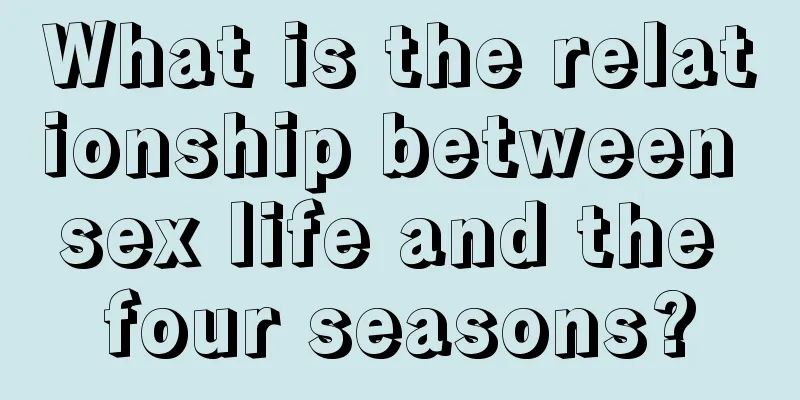The amazing changes that happen in your body during sex

|
The nervous system is the main skill regulation system in the human body. Under the unified regulation of the nervous system, various organ systems in the body perform different functions to adapt to changes in the internal and external environment and maintain the normal progress of life activities. The basic way for the nervous system to achieve its regulatory function is reflex activity. For example, when the hand touches the boiling water kettle, it immediately retracts. We call this process a reflex. The completion of the reflex activity requires a neural pathway, which can also be called a reflex arc. The reflex arc is composed of five parts: receptors, afferent nerves, centers, efferent nerves, and effectors. For example, in the previous example, the skin of the hand is the receptor, and when it touches the boiling water, it feels hot. This feeling is transmitted through the afferent nerves to the nerve center - the cerebral cortex. The center sends an avoidance command, which reaches the effector - the arm muscles through the efferent nerves. The muscles contract and the hand retracts. Although this process involves five parts, the nerve conduction is very rapid, so this series of actions is completed almost in an instant. Of course, this is a relatively simple reflex activity. Sexual activity requires the mobilization of many reflex activities throughout the body to participate, so its process is much more complicated, but the basic principle is the same. The neural organs that regulate visceral activities are collectively called the functional nervous system, which includes two parts: the sympathetic nervous system and the parasympathetic nervous system. Most organs are innervated by both sympathetic and parasympathetic nerves, and the two types of nerves often have opposite effects on the same organ. For example, when the parasympathetic nerves are excited, they can cause the bladder detrusor to contract and the bladder sphincter to relax, thereby facilitating urination. When the sympathetic nerves are excited, the detrusor muscle of the bladder relaxes and the internal sphincter of the bladder contracts, inhibiting urination. There are two levels of centers that control autonomic nervous activity. There is a primary center in the spinal cord that regulates autonomic functions. Some of the most basic reflex activities in the human body can be completed in the spinal cord center, such as vascular tension reflex, sweating reflex, urination reflex, defecation reflex, erection reflex, etc. The human brain is the higher center for regulating vegetative functions. If the higher centers of higher animals are damaged, the motor function of the body will be seriously affected, and the vegetative function will also be affected to a certain extent, and the ability of fine regulation will be lost. In the early 20th century, Pavlov established the theory of higher nervous activity through scientific experimental methods . The basic mode of higher nervous activity is mainly conditioned reflex, which is one of the advanced skills of the brain. Conditioned reflexes are acquired during individual development. Human sexual activity is regulated by the autonomic nervous system, and a series of changes will occur, including penile erection, ejaculation, vaginal narrowing, increased vaginal fluid leakage, and involuntary contraction of the pelvic muscles. These activities are controlled by both the primary centers of the spinal cord and the higher centers of the brain. The sexual activity of animals is a conditioned reflex. When the hormones in the body change and estrus occurs, if they meet the opposite sex, mating will occur immediately. But human sexual activity involves both the first signal system and the second signal system. People not only become sexually excited when stimulated by specific images of the opposite sex, but also have sexual responses after receiving abstract stimulation such as text. On the other hand, the human brain has a strong inhibitory effect on sexual activity, so that even if humans have sexual impulses, they do not immediately turn them into sexual behavior. Masturbation to produce an erection It does not need to go through the brain, but is a reflex activity controlled by the primary center - the spinal cord; erections caused by non-physical stimulation such as vision must go through the higher centers of the brain. There are also differences between men and women in the neural regulation of sexual activity: men's second signal system seems to be stronger than women's during sexual activity, and they have a strong response to various signals, but women need to be caressed - the stimulation of pure physical contact - to achieve sexual excitement. |
<<: Men cheating is easy to come back because of this
>>: What happens when sperm enters a woman's body?
Recommend
7 differences between men and women in sex life: Men often think that women are the most fickle
Men think about sex more often Professor Lauman f...
Sex in autumn should be done in three ways
After the Mid-Autumn Festival, the weather become...
What is the cause of bleeding after sex?
Many people have some problems in their sex life....
The man on the bed would never think of this
When making love, men's minds are usually ver...
What kind of man makes women unable to hold back
In life, both men and women desire to obtain thei...
Six reasons why women have one-night stands
One-night stands are really boring, but don't...
What is the standard size of a woman's reproductive organs?
1. Labia minora (6cm): The average length of a gi...
The couple's "activity" can't last more than 15 minutes each time
When a couple has sex, from the beginning of sexu...
These doubts of men can be perfectly answered by their girlfriends
Most men say that they can never guess what women...
There are four characteristics of female orgasm
Like the female mind, the female orgasm is a comp...
How big is normal for a man's penis?
Shi Chengli in China once measured the penis size...
It’s so easy for women to get pregnant by raising their legs!
In addition to satisfying physiological needs, se...
Which one is more pleasurable, "masturbation" or "sexual intercourse"?
When masturbating, the whole process is controlle...
What your farts can reveal about your health
The common name for "intestinal gas" is...
Why was Yang Guifei Zhao Feiyan favored but infertile?
Zhao Feiyan was the second empress of Emperor Che...









